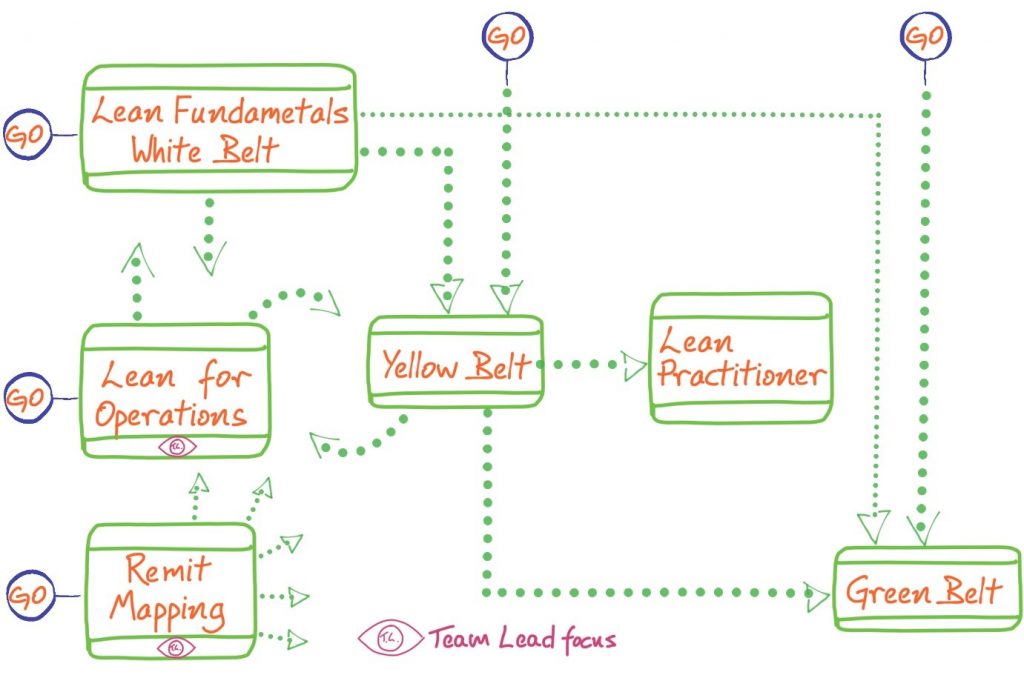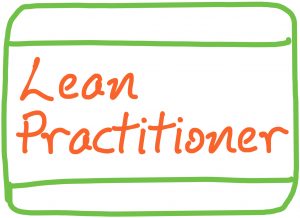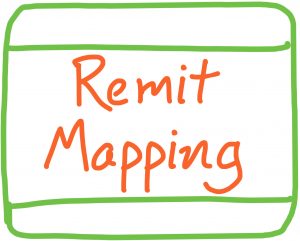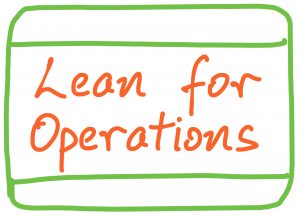Agile’s new training

By Michael Sinnott, UCD Agile
In November 2018 UCD Agile launched three new training sessions and began teaching an enhanced version of the established Yellow training. Lots of feedback and thinking went into these developments and they address opportunities and gaps in Agile’s skills development space. This article gives you a flavour – contact agile@ucd.ie, or one of the team, if you would like to hear more.
Lean for Operations (full day training) and Remit Mapping (two hour ‘why and how to’ session) are aimed at those who lead operations teams and who want to see how they might bring some of Lean’s good thinking and practices into the areas they run. We have used feedback to enhance our Yellow Belt training (full day), bringing out more of the Lean/efficiency perspective. Lean Practitioner (two hour ‘why and how to’ session) is for those who have successfully delivered a project and want the chance to show off – to show off, and be recognised for, the success of their work and how they put their yellow belt training into practice.
Why bring in these new offerings and make the Yellow Belt change? Read on below for our thinking.
And check the ‘My Learning and Development’ tab in InfoHub, or contact Michael or Olga in Agile, for the sessions themselves or a longer conversation on what is available.
New: Lean Practitioner
The new Lean Practitioner training is easiest to explain. We wanted to give colleagues who do the Yellow Belt training, and then use it back in their home environments, the chance to bring their good work together, to describe it for all to see, and to get recognition.
Lean Practitioner involves: attending a two our guidance session; one on one work with one of the staff in Agile, if needed; describing the work in Leans’ A3 format; and submitting it for assessment in Agile. Assessment is based on making good use of some of the tools, a real change being made, and the A3 tells a good visual story of the work. Agile is there for support in all of this. If you have already carried out the work, you can take part. If you are staring something, you can take part. And if you are doing the yellow belt training from here on, you will be encouraged to submit, but do not have to, of course, for Lean Practitioner.
What agile wants to get out of this are answers to how we can help make the impact of what colleagues do visible, whether colleagues understand how to apply the training, if Lean Practitioner certification creates any kind of incentive, can we draw people into telling their stories, how Agile can best support this, how we can better connect with colleagues’ needs in all of this. We are forever asking ourselves questions like these.
 Enhanced: Yellow Belt training
Enhanced: Yellow Belt training
We have modified the existing Yellow Belt training to give a greater focus to Lean rather than Lean Six Sigma, as well as to connect it to the Lean Practitioner Certification process for Yellow Belts. With over 200 colleagues having taken the Yellow Belt training, it has become clear that the analytic approach that Lean Six Sigma takes is further from people’s experience than the more
What is the difference between the Lean and Lean Six Sigma emphases? The basic goal of Six Sigma is to eliminate defects and waste, thereby improving quality and efficiency, by streamlining and improving business processes. The main emphasis of Lean is on removing unnecessary and wasteful steps in a process so that only steps that directly add value are taken. If you have not been hands-on with this the difference can seem small – Lean/waste-value is seems easier to grasp in UCD than Six Sigma/defects-waste-quality-efficiency.
 New: Remit Mapping
New: Remit Mapping
Remit is defined as ‘an area of responsibility or authority’, and so remits, in the UCD context, exist all scales, from the individual all the way up to the University. The one sure thing is that a remit can shift and change over time, under many influences. What is it ‘now’? This training is focused on team leads so looks to the question “what is your team’s remit, in practice, ‘now’?” Why ask? For most people, clarity of purpose is a key component of a good working environment and so if a lot of our purpose comes to us through the remit we have, if we are not clear on remit we are not helping our staff. So remit mapping is about painting a clear picture of a team’s ‘now’. If you are looking to shape the future (i.e. manage your team) then starting from ‘now’ is crucial – if you head off without a clear picture of ‘now’ who knows where you will end up.
In these session we bring together some of what we have been using in Agile with various groups across the University. Over the two hours of the session we explore some of the concepts in the paragraph about and look at how the trainees can bring them to bear in running their own remit mapping sessions.
 New: Lean Operations
New: Lean Operations
How do you bring Lean into daily operations, using it in supporting your team, making it easier to successfully deliver your businesses? How do you bring customer, value, metrics, etc. into all the good operational stuff happening all the time? More than this, how do you use it to develop your team’s skills, empower its members, build further on successes, and fill gaps?
This one-day training for team leads in using Lean was developed in conjunction with our training partner, SQT.
Why create Lean Operations training? We have recognised, for a long time, that Lean and its associated training can be seen as about ‘doing projects’. In operations area where the day to day may be seen as always a ‘must’ then improvement projects and can seem to be as ‘nice to haves’. In operations, ‘must’ trumps ‘nice to have’ which can mean, in some cases, “We’re too busy to make things better”.
If this is the case then ‘this year’ can end up being ‘last year plus tweaks’, issues unresolved, unless there happens to be a major crisis or some outside initiative to be responded to. And yet… customer, value, metrics, removing ‘waste’, customer/team win/wins, error reduction, clear processes, empowered staff etc. etc. are what the day to day is meant to be.
Lean Operations training helps team leads understanding and explore how they can bring the thinking and approaches of Lean into running their team and delivering its businesses.
Wrapping it all up
Based on our experiences providing training and working with colleagues on projects, on initiatives, in workshops, over coffee… we have expanded and enhanced our training offering. White Belt/Lean Fundamentals, Yellow Belt, and Green Belt training are at the heart of giving people the skills and thinking which can help make things better – better able to deliver our ‘businesses’, better able to meet the needs of our ‘customers’ – making UCD a better place to teach, research, learn and work. Lean Practitioner Certification is then a way of recognising the good work being done by many of our colleagues. Remit Mapping and Lean Operations have been created in recognition that team leads need skills, ideas and support in developing their operations areas. These sessions invite the team leads to take ‘two step back’, to better be able to reflect on and deliver their business, to shape and develop environments.
See you soon on a training session, in a workshop, or over a coffee… and we can explore this further together.
